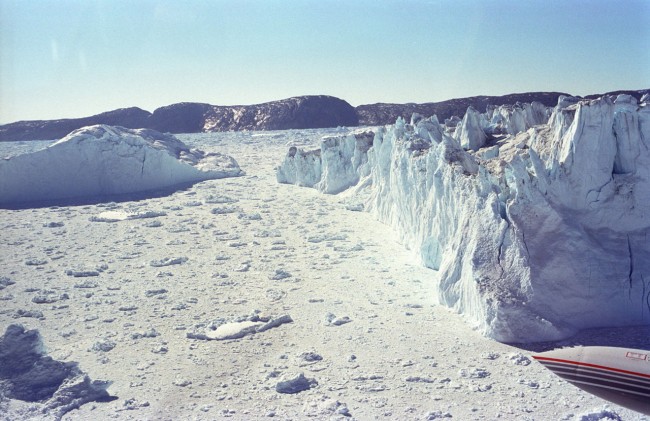
Researchers have found evidence of ancient landscape 3,000 feet of ice in Greenland. The 2.7 million year old Greenland ice sheet hides an ancient landscape, a tundra that was covered by ice well over two million years ago.
Soil samples taken from under Summit, the highest point on the Greenland glacier, turn out to be remnants of a tundra landscape that covered much of Greenland before the glaciers came.
Pollen and plant DNA found in the seafloor off of Greenland also suggest that tundra and patchy forests, much like the Arctic today, once covered at least some of Greenland. The new findings suggest that the tundra was uncovered for 200,000 to 1,000,000 years before ice-covered it.
Paul Bierman, lead author of the study, stated that there was once a stable landscape on Greenland, before the ice sheet. His research was published in the latest issue of the journal Science.
The new data indicate that the Greenland Ice Sheet is one of the oldest, in the world. That the soil under Summit is 2.7 million years old means that the ice sheet has not fully melted since, including a period of dramatic natural warming that happened around 130,000 years ago. Warming at the time was as dramatic as current warming that climate change is expected to produce in the 21st century.
The soil sample that led to these conclusions is not new, having been retrieved in a 1993 study. The GISP2 project was an effort to reach bedrock beneath Summit. The effort produced a 10,019 foot-long (3,052 meters) ice core that records over 100,000 years of climate history. Until now, no one had looked at the dirt in the ice at the bottom of the core.
Bierman and his fellow researchers examined the soil using a technique called beryllium-10 dating. Cosmic rays produce beryllium-10 only on or near the Earth’s surface. Researchers use the isotope to measure the age of landscapes for that reason.
Counting the number of beryllium-10 isotopes in a sample gives an estimate of how long ago the sample was exposed to cosmic rays. Beryllium-10 has a half-life of 1.36 million years, so half of the isotopes created in a given year would still exist after that length of time.
The long persistence of the soil under Greenland’s ice sheet does need an explanation. Evidence suggests that the ice sheet does not move like a glacier. Instead the ice deforms as it heats up, but the base stays solid. That solid base allowed the Greenland Ice Sheet to preserve an ancient tundra landscape.
The GISP2 core showed that the bottom 30 to 50 feet (10 to 15 meters) is frozen to the bedrock. This base lies under many, many layers of folded and deformed ice layers, Bierman said.
Glaciers are usually thought of as forces that erode landscapes, say Lee Corbet, co-author of the study and a graduate student at the University of Vermont. The new research shows that the Greenland Ice Sheet actually caused little erosion since forming over three million years ago.
Scientists and policymakers interested in global climate change are also interested in the Greenland Ice Sheet. It could help scientists better understand how similar ice sheets in Alaska and Antarctica will melt or grow in response to climate change. The rate of melting of the Greenland and Antarctic ice is also important to estimates of future sea-level rise.
Bierman and his colleagues are now looking for similar ancient landscapes in Antarctica.
The discovery of an ancient landscape that lies beneath the Greenland Ice Sheet opens up the possibility to learn more about ancient landscapes, among other things. This discovery has implications for research on climate change and for investigations of other ice-covered lands.
By Chester Davis
Sources:
Christian Science Monitor
NBCNews.com
io9



